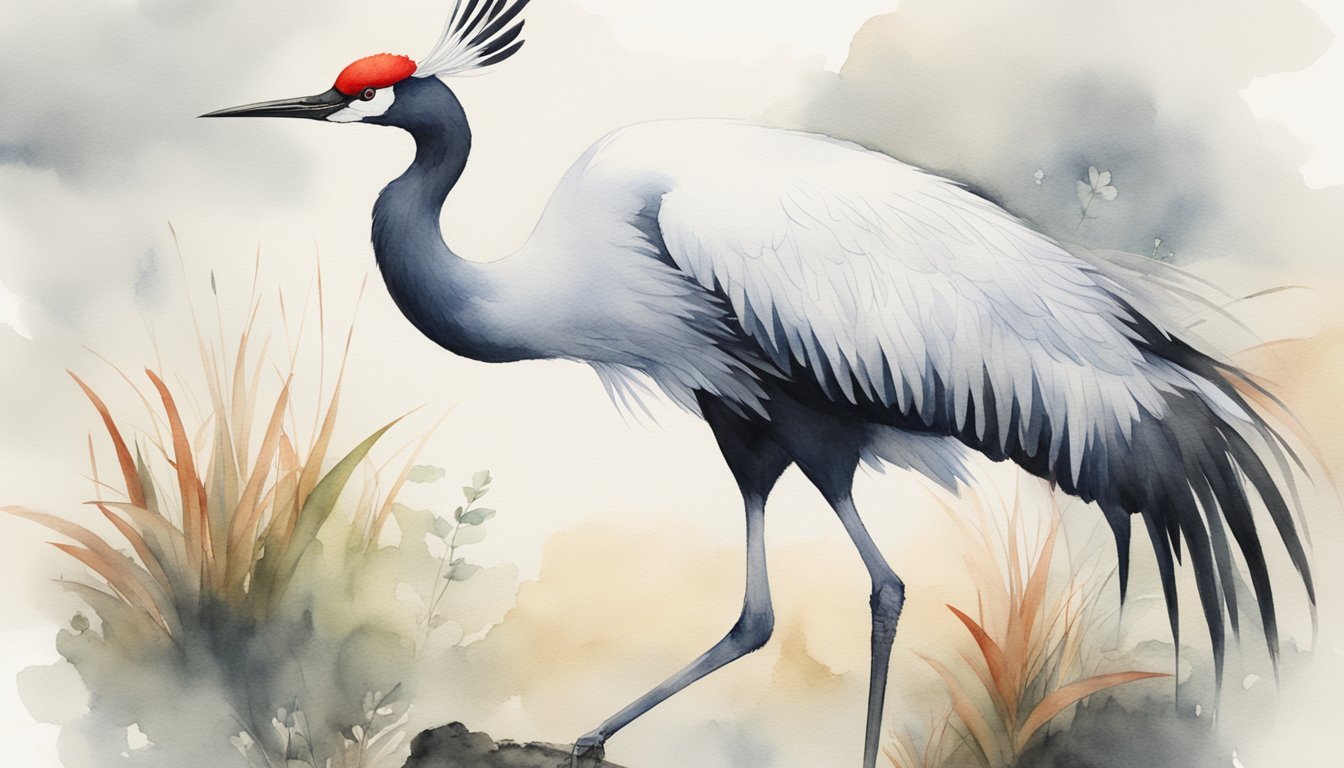Conservation and Ecology
The red-crowned crane, known as Grus japonensis, is a symbol of luck and longevity in Japanese culture, revered for its elegance and grace. With its population primarily divided between the migratory continental and the non-migratory insular group on Hokkaido, Japan, conservation efforts for this endangered species are essential to maintain the balance in East Asia’s wetlands ecosystem.
Habitat and Distribution
Red-crowned cranes are found in East Asia, including regions like Hokkaido, China, Siberia, Mongolia, and the Korean Peninsula. They are associated with wetlands, marshes, and riverlands, which offer them the necessary conditions for breeding, feeding, and nesting.
Population and Threats
The species is currently listed as endangered due to habitat loss and other human-induced factors. The East Asian population faces threats from agricultural expansion, while the non-migratory population in Hokkaido encounters fewer man-made threats.
Conservation Efforts
Numerous conservation programs like those by the International Crane Foundation are in place to protect habitats and mitigate crane-human conflicts. In Japan, these efforts have led to an increase in the Hokkaido crane population.
Breeding and Behavior
Red-crowned cranes form monogamous pair bonds and exhibit complex courtship displays. Migratory populations breed in Siberia and China, whereas the Hokkaido population breeds locally.
Diet
They have a diverse diet that includes fish, grain, plants, and various aquatic invertebrates, which they forage from their wetland habitats.
Significance in Culture
In Japanese culture, the red-crowned crane epitomizes luck, immortality, and loyalty. It features prominently in art, literature, and folklore.
Symbolism and Legends
The crane is often referred to as the “bird of happiness” and is a central figure in many Asian legends. Its graceful appearance symbolizes peace and strength.
Interaction with Humans
The presence of red-crowned cranes has led to the development of eco-tourism in areas like Hokkaido, where they can be observed in their natural habitat, particularly in the Kushiro Marshlands. This interaction, while beneficial for awareness and conservation funding, requires careful management to protect the species from disturbance.
Physical Characteristics and Identification

When observing the Japanese Crane, one is struck by its striking contrast of colors and the majestic nature of its presence, particularly within its natural environment across Northeast Asia.
Description
The Red-crowned Crane, also known as Grus japonensis, is recognized as one of the largest crane species. These cranes are known for their long lifespans, often living more than 60 years. Their body is primarily clothed in white plumage, which showcases their grace and elegance.
Distinctive Features
A defining feature of the Red-crowned Crane is the vibrant red spot on top of its head, which stands out against its otherwise black and white coloration. The black neck and tail feathers provide a striking contrast to its white body, making it easily identifiable.
Differences Among Species
Red-crowned Cranes differ from other crane species in several aspects. In comparison to the Whooping Crane, the Red-crowned Crane has more black on its wing primaries and a fully black neck rather than just black on the face and neck. The Red-crowned Crane is often referred to as the Manchurian Crane, highlighting its geographical connection with regions in China and Russia.
Gender Differences
There is little to no sexual dimorphism in Red-crowned Cranes; both males and females are virtually identical in appearance. Size-wise, they are quite similar, though thorough observation and measurement can sometimes reveal that males are slightly larger.

